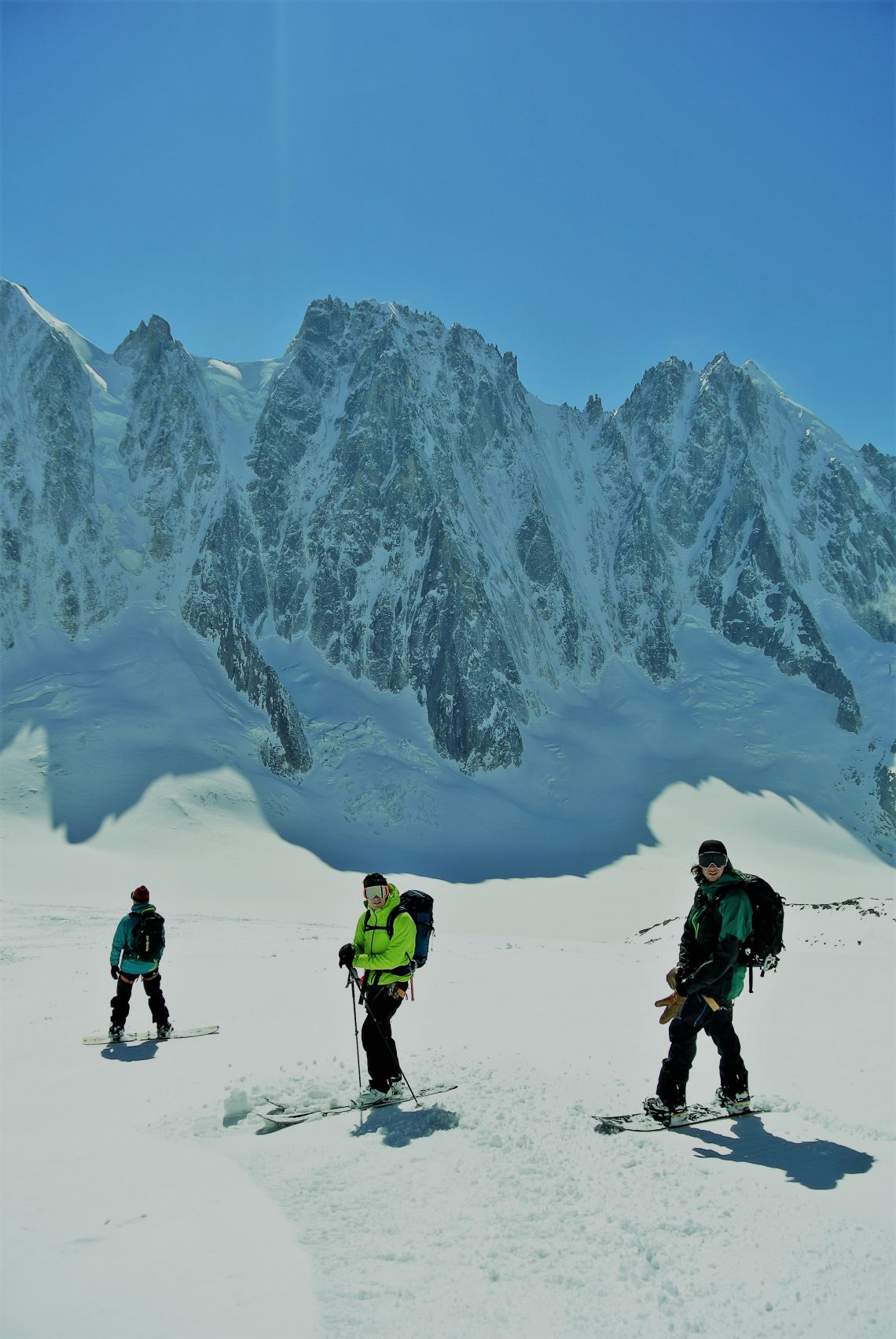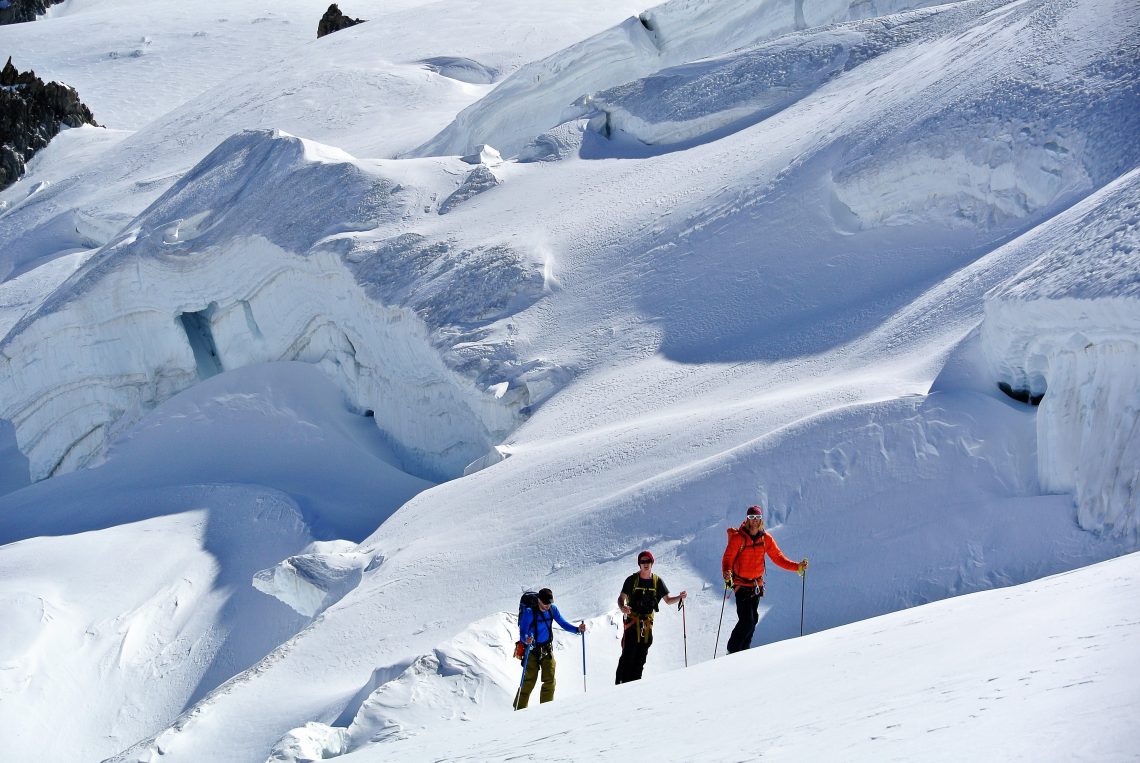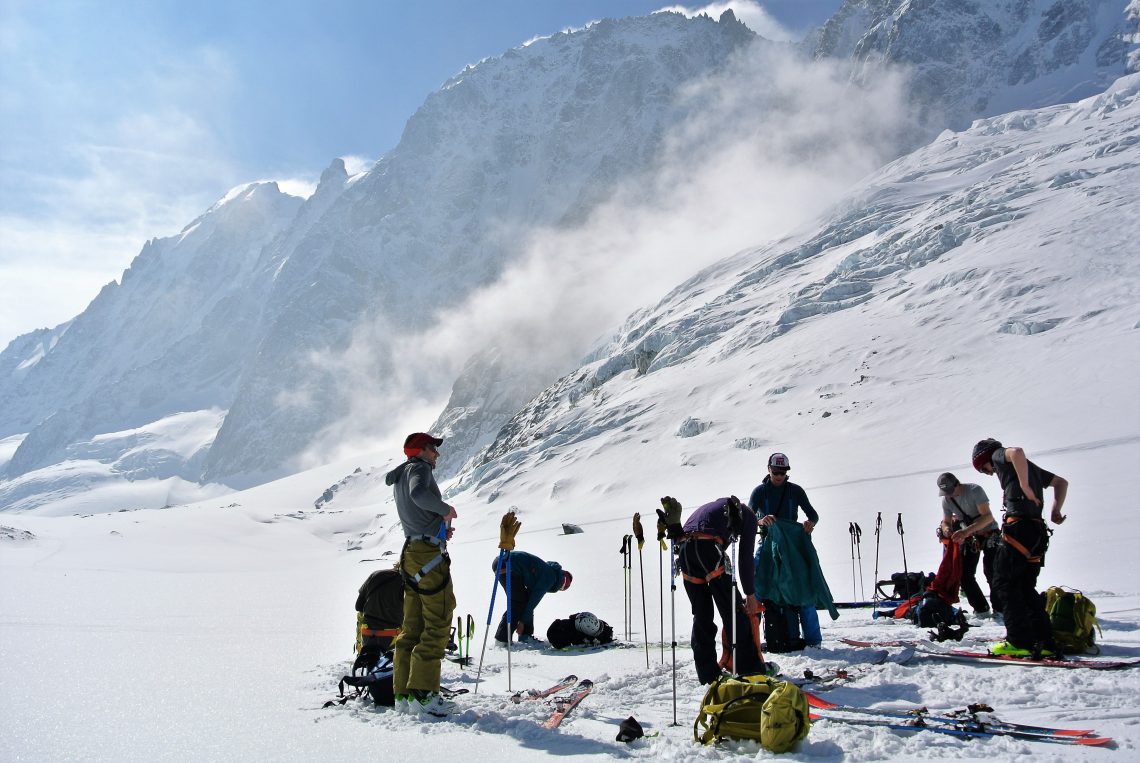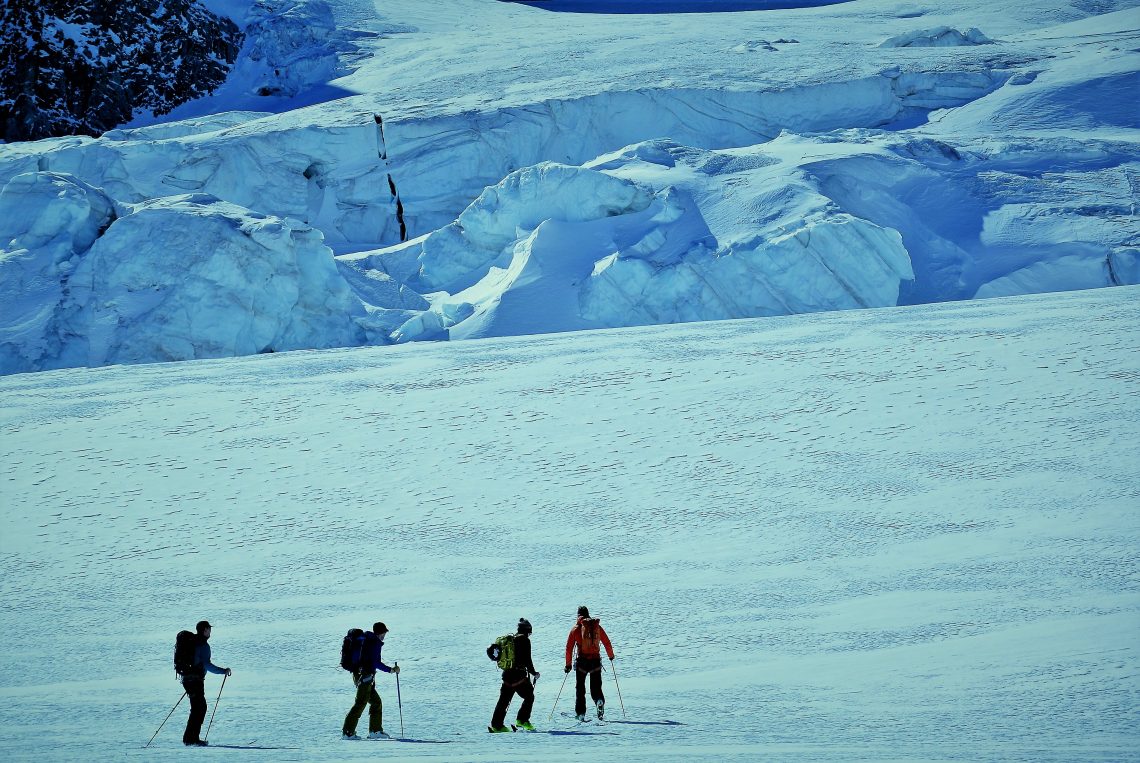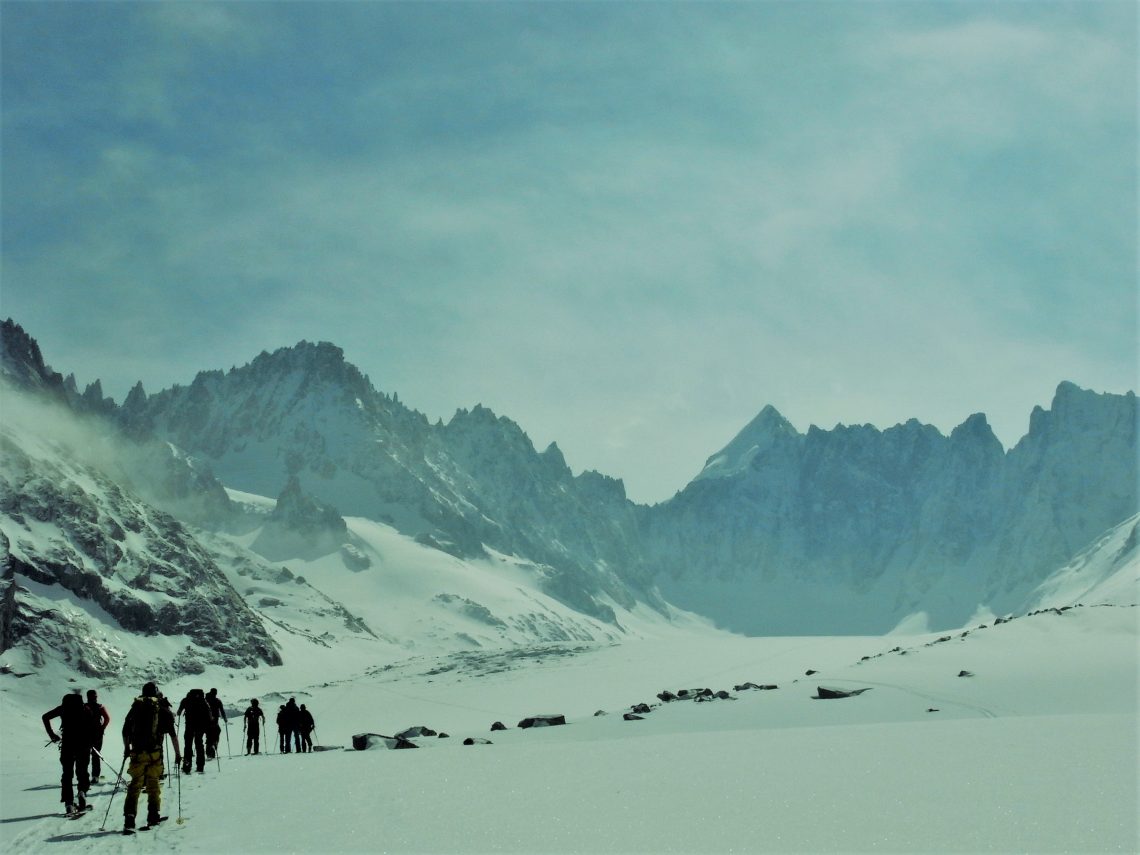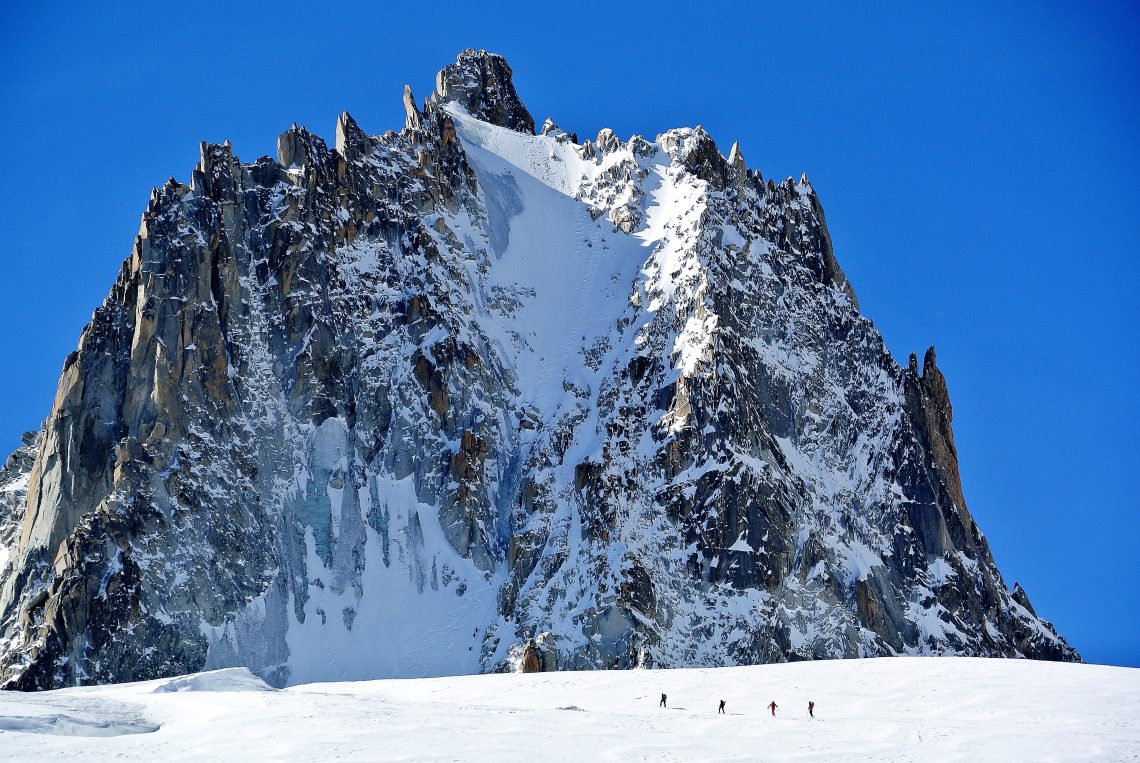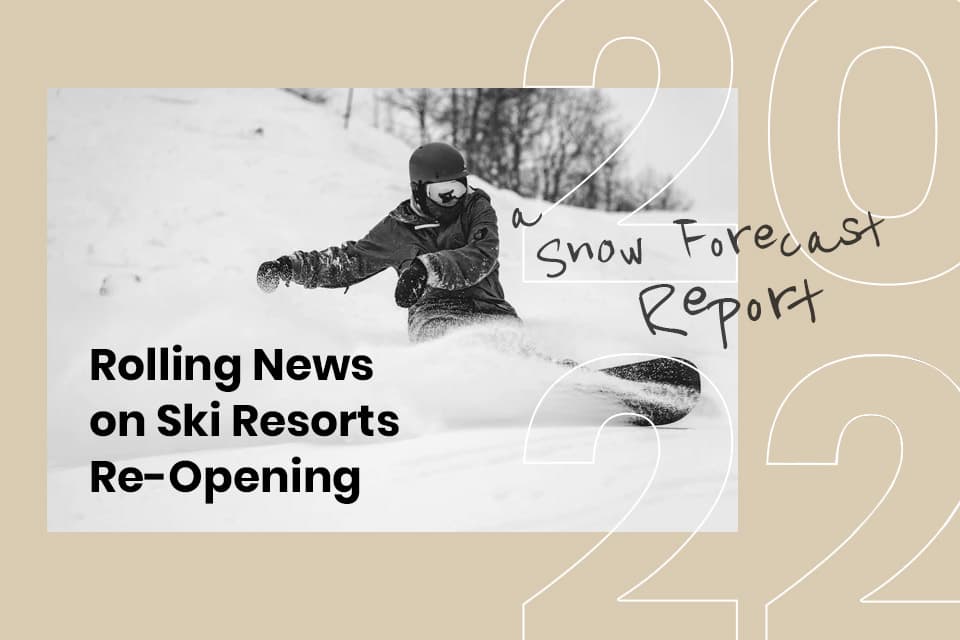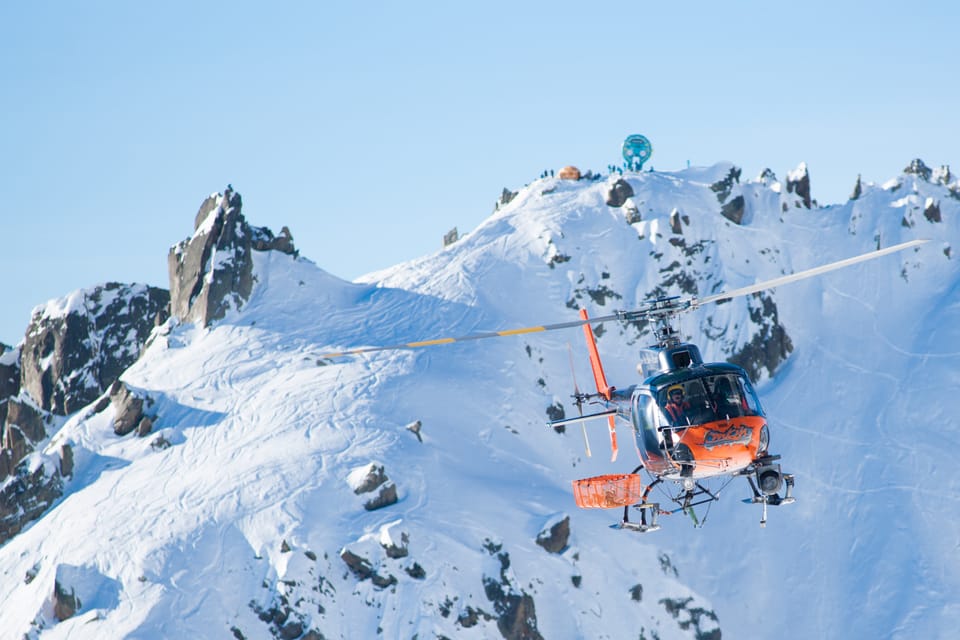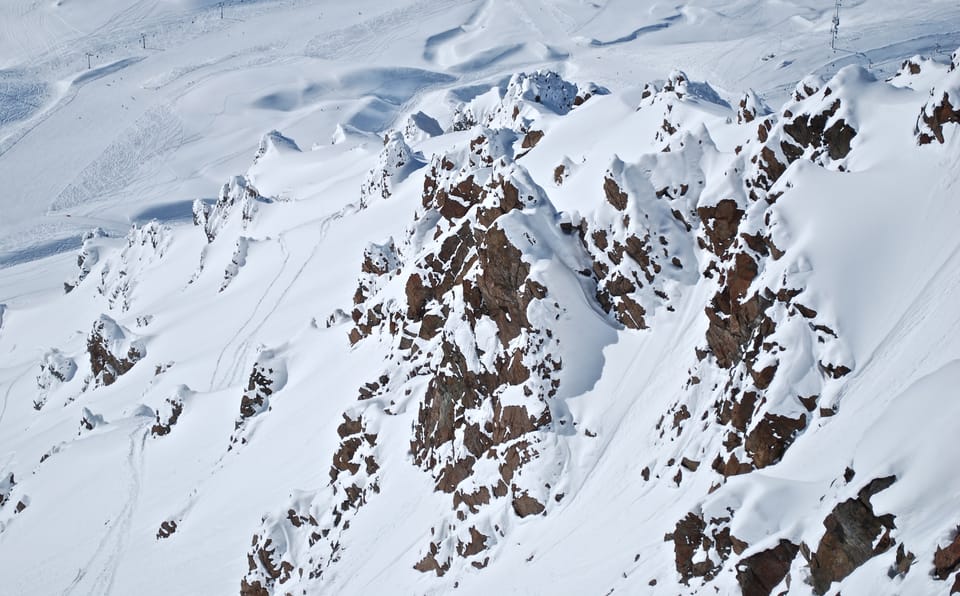MOUNTAIN MAJESTY

Alf Alderson enjoys a day amongst the masses and massifs above Chamonix
Chamonix is such a peculiar mix – the height of urbanisation and easy living in the town, the height of the Mont Blanc massif above the town, and the surreal combination of the two providing all the thrills any man or woman could want in an average lifetime.
There are few places in the world where you can be sipping a breakfast coffee in a swanky ski chalet at 8am, and traversing a knife-edge ridge with death drops either side at 9am. Which is exactly what I’m doing right now, roped up to American mountain guide Zoe Hart and Italian ski journo Luca Cataldini.
We’re negotiating our way down the famous arete from the top of the Aiguille du Midi cable car station at 3842-metres; this provides access to a variety of ski touring routes around the Mont Blanc massif, none of which could be described as anything less than jaw-droppingly spectacular – vast crags, huge ice falls, yawning crevasses, the blue-green glint of ice and glaciers everywhere and somewhat bizarrely, a throng of humanity cavorting around among it all.
Because access to all this mountain majesty is so easy – all you have to do is shell out a handful of Euros for the ride up from the center of town in the Aiguille du Midi cable car. Literally anyone can put themselves amongst the kind of terrain that in most other parts of the world is the preserve of experienced mountaineers.
French mountain guides seem to have no qualms about taking clients who look like they’d struggle to cope with a steep black run down the famed Vallée Blanche, a 24-km off-piste glacier descent all the way back to Chamonix (if conditions allow), and a variant of this was on our ‘to do’ list today; but for now, back to dealing with that knife-edge ridge…
Although it was a bright, sunny April day, the wind whipping across the ridge ensured temperatures were well below zero as the three of us negotiated our way down to a point where we could unrope, clip in and ski off.
Crowds of gawping tourists looked down from the safety of the cable car station as we, and scores of others, crab-crawled down the ridge. The tourists had made the journey up in the cable car to take selfies in the shadow of Mont Blanc’s white-domed summit, dressed in everything from designer ski wear to jeans and parkas, and this proximity to ‘civilisation’ adds a surreal air to the whole scenario – were this a remote arete on some far away mountain range you’d be exercising utmost caution, but here, because it’s almost as busy as Bournemouth Beach on a summer Sunday, it’s hard to accept the fact that concentration and care are required.
Zoe, who is based in Chamonix, is as good a person as you’ll find to be on the end of a rope with – her CV includes the ascent of the Over Couloir on the Brenva Face of Mont Blanc, the first ascent of Big Wednesday (VI 6) on Ben Nevis, Scotland and some of the first female ski descents in the Karakoram; getting me and Luca down the Aiguille du Midi ‘tourist ridge’ safely would be as easy for her as taking a selfie was for the day-trippers above us.
Fortunately, after you’ve negotiated the ridge and skied down onto the Mer de Glace (‘Sea of Ice’) that snakes its way down the Vallée Blanche the throng of humanity begins to ease out a little as various groups head off on whatever route they’ve chosen for the day.
Ours was to be a pretty easy two-hour slog up from the glacier for coffee and cake at the Rifugio Torino on the border of France and Italy followed by a 1500-metre descent back towards Chamonix and another mountain restaurant; the tantalising mix of wilderness and cake, patisserie and fine Italian coffee knows no end in these mountains, and I for one wasn’t complaining.
Progress on the 500-metre skin up to the Italian border was varied since there was a mix of age, fitness and ability in our group, along with slower members who were keen to get some photos of these dramatic landscapes (that’s my excuse for being towards the back of the party, anyway…).
We all gathered at a saddle in the glacier from where we’d be starting our ascent to skin up, but not before removing all the layers that had been needed up on the Aiguille du Midi; down here, with shelter from the wind and the April sunshine bouncing off the snow, it was hot enough to strip down to t-shirts.
It wasn’t long before, almost organically, three groups developed, each group skinning at about the same pace. Out in front were the speed freaks, amongst them Matt Helliker, a Cham-based British mountain guide with first ascents in Alaska, Peru, France and Scotland, and pro freerider Piers Salomon, a former British ski champion and star of numerous Sweetgrass Production ski movies. They were joined by possibly the world’s most enthusiastic man, Andy Foster, Patagonia’s design and construction expert – in a terrible tragedy a few months later, Andy was killed by a freak rock fall whilst climbing at El Capitan, although his quick actions in sheltering his climbing partner and wife Lucy from the rock fall probably saved her life.
I found myself stopping for breathers on a regular basis. It’s not that the climbing was particularly steep, and this being Chamonix everything was well-trodden and, with no fresh snowfall lately, there was no need for anyone to break trail. But we were starting from an altitude of some 2800-metres so the air was a bit thin and getting thinner, particularly for someone like myself who spends the winter living at around 1200-metres.
However, there was enough magnificent scenery to take our minds off this. I’ve visited Chamonix many, many times and can never get used to the way in which you can access such wild, dramatic scenery so easily. The highest peaks in Europe bore down on us as we inched our way upwards, from 4013-metre Dent du Geant looming on the left to 4810-metre Mont Blanc over on our right.
My student years were spent studying geology and physical geography, and the scenery I now found myself surrounded by had literally been textbook illustrations when I was an undergraduate – you’d think having seen it since I was a kid in books, slide shows and magazine, and then on numerous ski, hike and bike trips to the region, it would all be a bit passé by now, but as Matt Helliker said as we gazed over the alpine panorama together: “You never get used to the scenery here; even when you live and work amongst it, it still never fails to impress”.
Because the terrain is quite literally an outdoor fun park for the residents of and visitors to Chamonix (and to a lesser extent Courmayeur on the southern, Italian side of Mont Blanc – or Monte Bianco as it’s known in Italy) what is potentially a dangerous and challenging environment becomes that little bit safer because it’s so well-known and so well-trodden.
That’s not to say you don’t still have to take all the usual precautions of any day out in the high mountains, but today had a pretty relaxed feel about it, perhaps the more so because we had a couple of top-flight mountain guides keeping everything in order.
So, the 500-metres of skinning up to Rifugio Torino was a warm, sunny and enjoyable experience, with plenty of banter, plenty of photos stops and, eventually, people arriving at the refuge in dribs and drabs having proceeded at their own pace.
The peak of Punta Helbronner (3462-metres), just above the refuge, is home to a lift station that gives access from Courmayeur to the Vallée Blanche from the Italian side of Mont Blanc, although if you do it from here there are some complicated and potentially expensive logistics involved in getting back to Courmayeur – since we weren’t I won’t bother you with all that detail.
Today’s bluebird conditions meant that from the refuge’s outside terrace the views were truly spectacular, particularly down into the Aosta Valley, with Courmayeur far below, and beyond this to the south my own home terrain of the Haute Tarentaise in France’s Savoie region; I was particularly interested in this as although I’ve spent several winters and summers exploring in these mountains I’d never seen them from this direction or altitude – I was desperate to be able to boast “I can see my house from here,” but I was in the presence of mountain professionals who would undoubtedly know I was talking complete bollocks, so I kept my own council…
Views enjoyed and absorbed and coffee taken it was now time to get down to some proper business – skiing back down to Chamonix, or as near as we could get. Matt and Zoe had decided that rather than head back the way we’d come we would traverse skier’s right beneath 3535-metre Aiguille Marbrées before descending down the right-hand side of the Mer de Glace; the usual route from the Aiguille du Midi, the Vallée Blanche, runs to the left of this, which meant our descent, known rather uninspiringly as the Vallée Noir, would be quieter and less tracked.
Indeed, in the upper reaches it proved to be untracked as well as having a light covering of powder, which ensured a bit of a free-for-all as, with lots of space and lots of vertical to play with, everyone opened up the throttle.
It was a delight for me to see the easy skills and relaxed styling of Piers and Matt, for who this environment is, essentially, ‘home’; and for my own part I was pleased to provide everyone else with the opportunity to enjoy a good laugh as I took it on myself to lose an edge on a particularly fast and ferocious turn and bounce rather than ski down a fair few metres of the glacier.
“Are you ok?” Dutch journo Mirte Van Dijke enquired of me solicitously as I lay in a crumpled heap with skis, poles and items of clothing scattered about like bits of glacial moraine.
“Yeah, yeah, I’m fine,” I spluttered. And indeed, I felt fine at the time. The next morning was a different matter though as strains and bruises made themselves felt. Good thing it was nearing the end of the season…
As we descended, the snow became more spring like, allowing for soft, floaty turns on slopes that varied from gentle to relatively steep, but nothing too challenging; of course, it doesn’t pay to become too nonchalant about things in glaciated, craggy terrain, so we were all pretty amazed to see a small group of skiers taking their lunch on a mound of avalanche debris just as the day was reaching its warmest – talk about tempting fate.
This kind of dull, unthinking behavior is perhaps the biggest downside to the easy accessibility of the Mont Blanc massif – it allows pretty much anyone with a reasonable level of skiing ability to go and play on terrain that deserves more respect than to sit in avalanche paths sunning yourself and chewing on a baguette…
Changes in the local landscape such as the deposition of avalanche debris happen on a day-to-day basis of course, but year-to-year and decade-to-decade changes can also be seen from a glance at a map of the region. The 1:25000 IGN topographic survey maps that make up the French Institut Géographique National’s excellent TOP25/Série Bleue range show, amongst other things, the extent of the region’s glaciers in the 1970s as well as their current levels (as an aside the maps are also GPS compatible and amongst other things they provide accurate 10-metre contours for mountainous areas, vividly enhanced by hill shading and graphics for rocky terrain. Hiking trails and ski touring routes are also featured, making TOP25 maps indispensable to any mountain travellers, whether on skis or foot).
The map for the Chamonix area shows that all the glaciers have retreated dramatically in the last forty years, and in few places is this more obvious than as you reach the lower slopes of the Mer de Glace. By this stage you’ll almost certainly be encountering other skiers who have descended by the ‘regular’ route, and, especially in spring, having to pick your way past rocks, boulders and meltwater pools until eventually the ice and snow peter out and there’s no choice for it but to strap your skis to your pack and hike.
The well-worn trail takes you to a series of steps which climb up the left side of the glacier to the Hotel du Montenvers (which reopened this winter after extensive refurbishment work). The hotel was built in 1880 to cater for the burgeoning tourist trade and visitors who would arrive here by cog railway from Chamonix town center to enjoy the panorama across the Mer de Glace and up to the peaks of the Drus and Grandes Jorasses, with the surface of the glacier being just a few feet below the railway terminus next to the hotel.
Today the glacier’s surface is several hundred feet below the terminus, so much so that a mix of steps and elevator have been put in place to allow people to clamber up from or wander down to it. As you slog your way up the steps at the end of your descent of the Vallée Blanche you encounter little signs informing you that this was the level of the glacier in 1996, 1984, 1975 and so on; the rate of retreat is truly alarming, to the extent that it’s almost impossible to picture how such a vast volume of ice has simply melted away.
And here, perhaps, is one of the upsides of the easy accessibility of Chamonix’s incredible alpine terrain; it allows people who may never otherwise visit high mountain country to access it by train or cable car with the minimum of effort and see for themselves what those of us who spend time in the mountains are well aware of – climate change is real (maybe Donald Trump should take a vacation here…?).
In a snowy winter it’s theoretically possible to ski all the way down to the outskirts of Chamonix, but this was out of the question today, so the cutesy bright red train was a welcome way of getting back down into town; I’ve done the three-mile hike down to Cham in the past, and with a thousand-metres of descent it’s not something you’d really want to do in ski boots…
Back in town the temperature was in the mid-twenties, which made a beer stop pretty compulsory. As I sipped on my second cold one with the rest of the crew we discussed the peculiar, entrancing and at times maddening entity that is Chamonix; today we’d gone from an altitude of 1035-metres to 3842-metres and back again by cable car, skis, foot and train; we’d experienced a temperature difference of around 40 degrees centigrade; we’d skied slopes as busy as Trafalgar Square on New Year’s Eve and as quiet as the mid-Atlantic; and we’d seen a glacier that 140-years ago was several hundred feet thicker than it is today amid landscapes that are still among the most dramatic in the world.
No wonder people keep coming back…
USEFUL INFO
Alf Alderson stayed at Black Rock Ski Lodge 158 Route des Aillouds 74310 Les Houches, France www.blackrockskilodge.com +33 (0)671347202 | blackrockskilodge@me.com
For more info on Chamonix www.chamonix.com
For ski packages including flights www.sno.co.uk/ski/france/chamonix/

